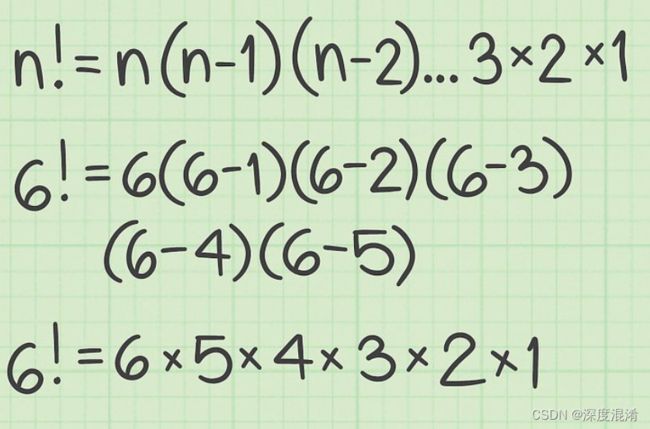- day15|前端框架学习和算法
universe_01
前端算法笔记
T22括号生成先把所有情况都画出来,然后(在满足什么情况下)把不符合条件的删除。T78子集要画树状图,把思路清晰。可以用暴力法、回溯法和DFS做这个题DFS深度搜索:每个边都走完,再回溯应用:二叉树搜索,图搜索回溯算法=DFS+剪枝T200岛屿数量(非常经典BFS宽度把树状转化成队列形式,lambda匿名函数“一次性的小函数,没有名字”setup语法糖:让代码更简洁好写的语法ref创建:基本类型的
- C++ 计数排序、归并排序、快速排序
每天搬一点点砖
c++数据结构算法
计数排序:是一种基于哈希的排序算法。他的基本思想是通过统计每个元素的出现次数,然后根据统计结果将元素依次放入排序后的序列中。这种排序算法适用于范围较小的情况,例如整数范围在0到k之间计数排序步骤:1初始化一个长度为最大元素值加1的计数数组,所有元素初始化为02遍历原始数组,将每个元素值作为索引,在计数数组中对应位置加13将数组清空4遍历计数器数组,按照数组中的元素个数放回到元数组中计数排序的优点和
- 【C++算法】76.优先级队列_前 K 个高频单词
流星白龙
优选算法C++c++算法开发语言
文章目录题目链接:题目描述:解法C++算法代码:题目链接:692.前K个高频单词题目描述:解法利用堆来解决TopK问题预处理一下原始的字符串数组,用一个哈希表统计一下每一个单词出现的频次。创建一个大小为k的堆频次:小根堆字典序(频次相同的时候):大根堆循环让元素依次进堆判断提取结果C++算法代码:classSolution{//定义类型别名,PSI表示对typedefpairPSI;//自定义比较
- 力扣面试题07 - 旋转矩阵
茶猫_
leetcode矩阵算法c语言
题目:给你一幅由N×N矩阵表示的图像,其中每个像素的大小为4字节。请你设计一种算法,将图像旋转90度。不占用额外内存空间能否做到?示例1:给定matrix=[[1,2,3],[4,5,6],[7,8,9]],原地旋转输入矩阵,使其变为:[[7,4,1],[8,5,2],[9,6,3]]示例2:给定matrix=[[5,1,9,11],[2,4,8,10],[13,3,6,7],[15,14,12,
- 模拟退火(SA):如何“故意走错路”,才能找到最优解?
小瑞瑞acd
小瑞瑞学数模模拟退火算法python启发式算法算法
模拟退火(SA):如何“故意走错路”,才能找到最优解?图示模拟退火算法如何通过接受较差解(橙色虚线标注)从局部最优(绿色点)逃逸,最终找到全局最优解(紫色点),展示其跳出局部极小值的能力。大家好,我是小瑞瑞!欢迎回到我的专栏!想象一下,你站在一座连绵不绝的山脉中,目标是找到海拔最低的那个山谷。你手上只有一个高度计,视野被浓雾笼罩,只能看清脚下的一小片区域。如果你是一个“贪心”的登山者,你的策略会非
- 编程算法:技术创新的引擎与业务增长的核心驱动力
在数字经济时代,算法已成为推动技术创新与业务增长的隐形引擎。从存内计算突破冯·诺依曼瓶颈,到动态规划优化万亿级金融交易,编程算法正在重塑产业竞争格局。一、存内计算:突破冯·诺依曼瓶颈的算法革命1.1存内计算的基本原理传统计算架构中90%的能耗消耗在数据搬运上。存内计算(Processing-in-Memory)通过直接在存储单元执行计算,实现能效10-100倍提升:#传统计算vs存内计算能耗模型i
- 图论算法经典题目解析:DFS、BFS与拓扑排序实战
周童學
数据结构与算法深度优先算法图论
图论算法经典题目解析:DFS、BFS与拓扑排序实战图论问题是算法面试中的高频考点,本博客将通过四道LeetCode经典题目(均来自"Top100Liked"题库),深入讲解图论的核心算法思想和实现技巧。涵盖DFS、BFS、拓扑排序和前缀树等知识点,每道题配有Java实现和易错点分析。1.岛屿数量(DFS遍历)问题描述给定一个由'1'(陆地)和'0'(水)组成的二维网格,计算岛屿的数量。岛屿由水平或
- 代码随想录算法训练营第三十五天
01背包问题二维题目链接01背包问题二维题解importjava.util.Scanner;publicclassMain{publicstaticvoidmain(String[]args){Scannersc=newScanner(System.in);intM=sc.nextInt();intN=sc.nextInt();int[]space=newint[M];int[]value=new
- 机器学习必备数学与编程指南:从入门到精通
a小胡哦
机器学习基础机器学习人工智能
一、机器学习核心数学基础1.线性代数(神经网络的基础)必须掌握:矩阵运算(乘法、转置、逆)向量空间与线性变换特征值分解与奇异值分解(SVD)为什么重要:神经网络本质就是矩阵运算学习技巧:用NumPy实际操作矩阵运算2.概率与统计(模型评估的关键)核心概念:条件概率与贝叶斯定理概率分布(正态、泊松、伯努利)假设检验与p值应用场景:朴素贝叶斯、A/B测试3.微积分(优化算法的基础)重点掌握:导数与偏导
- 从振动信号到精准预警:AI 如何重塑工业设备健康管理?
缘华工业智维
人工智能计算机视觉边缘计算信息与通信
在智能制造浪潮席卷全球的当下,工业生产正经历着从传统模式向智能化、数字化转型的深刻变革。在这场变革中,AI驱动的振动分析技术犹如一颗璀璨新星,成为工业设备可靠运行的“健康卫士”。它通过在设备关键部位部署振动传感器,如同医生为患者听诊般实时采集设备运行时的振动信号,再借助强大的人工智能算法对这些“工业脉搏”进行深度解析,从而实现对工业设备从故障预警到寿命预测的全周期精准守护。一、AI振动分析:设备状
- 基于DeepSeek的下一代大型游戏开发革命:架构、核心技术与项目管理实践
Liudef06小白
特殊专栏人工智能AIGC架构人工智能deepseek
基于DeepSeek的下一代大型游戏开发革命:架构、核心技术与项目管理实践DeepSeek大模型正重塑游戏开发范式,本文将深入解析如何利用这一革命性技术构建下一代大型游戏,涵盖从架构设计到项目管理的全流程实践。目录DeepSeek游戏引擎核心架构1.1神经符号系统融合架构1.2动态世界生成引擎智能NPC与剧情系统2.1角色人格建模技术2.2动态叙事生成算法大型项目管理体系3.1敏捷-AI混合开发流
- Unity学习笔记1
zy_777
通过一个星期的简单学习,初步了解了下unity,unity的使用,以及场景的布局,UI,以及用C#做一些简单的逻辑。好记性不如烂笔头,一些关键帧还是记起来比较好,哈哈,不然可能转瞬即逝了,(PS:纯小白观点,unity大神可以直接忽略了)一:MonoBehaviour类的初始化1,Instantiate()创建GameObject2,通过Awake()和Start()来做初始化3,Update、L
- 量子计算解决气候变化:科学家找到了新方法
大力出奇迹985
量子计算
气候变化已成为全球面临的严峻挑战,传统计算方法在应对与之相关的复杂问题时存在诸多局限。而量子计算作为新兴技术,为解决气候变化难题带来曙光。本文深入剖析科学家利用量子计算应对气候变化的新方法。量子计算凭借独特的量子比特与量子特性,在加速气候模型计算、优化模型参数、预测极端天气事件等方面展现出巨大优势。同时,在可再生能源整合、电网管理、碳捕获等实际应用场景中也发挥着重要作用。尽管目前面临硬件和算法等方
- 数据分析领域中AI人工智能的发展前景展望
AI大模型应用工坊
AI大模型开发实战数据分析人工智能数据挖掘ai
数据分析领域中AI人工智能的发展前景展望关键词:数据分析、人工智能、机器学习、深度学习、数据挖掘、预测分析、自动化摘要:本文深入探讨了人工智能在数据分析领域的发展现状和未来趋势。我们将从核心技术原理出发,分析AI如何改变传统数据分析范式,详细讲解机器学习算法在数据分析中的应用,并通过实际案例展示AI驱动的数据分析解决方案。文章还将探讨行业应用场景、工具生态以及未来发展面临的挑战和机遇,为数据分析师
- AI人工智能中的数据挖掘:提升智能决策能力
AI人工智能中的数据挖掘:提升智能决策能力关键词:数据挖掘、人工智能、机器学习、智能决策、数据分析、特征工程、模型优化摘要:本文深入探讨了数据挖掘在人工智能领域中的核心作用,重点分析了如何通过数据挖掘技术提升智能决策能力。文章从基础概念出发,详细介绍了数据挖掘的关键算法、数学模型和实际应用场景,并通过Python代码示例展示了数据挖掘的全流程。最后,文章展望了数据挖掘技术的未来发展趋势和面临的挑战
- C#中的设计模式:构建更加优雅的代码
Envyᥫᩣᩚ
c#开发语言
C#在面向对象编程(OOP)方面的强大支持,我们可以探讨“C#中的设计模式”。这不仅有助于理解如何更好地组织代码,还能提高代码的可维护性和可扩展性。引言设计模式是软件工程中经过实践验证的解决方案模板,它们提供了一种标准化的方法来解决常见的开发问题。对于使用C#进行开发的程序员来说,理解和应用这些模式可以帮助创建结构良好、易于维护和扩展的应用程序。本文将介绍几种常用的设计模式,并展示如何用C#实现它
- 算法刷题-动态规划之背包问题
1.背包问题之01(4.30)题目描述小明有一个容量为VV的背包。这天他去商场购物,商场一共有NN件物品,第ii件物品的体积为wiwi,价值为vivi。小明想知道在购买的物品总体积不超过VV的情况下所能获得的最大价值为多少,请你帮他算算。输入描述输入第11行包含两个正整数N,VN,V,表示商场物品的数量和小明的背包容量。第2∼N+12∼N+1行包含22个正整数w,vw,v,表示物品的体积和价值。1
- 2018年中南大学中英翻译
某翁
参考:20180827235856533.jpg【1】机器学习理论表明,机器学习算法能从有限个训练集样本上得到较好的泛化【1】Machinelearningtheoryshowsthatmachinelearningalgorithmcangeneralizewellfromfinitetrainingsetsampleslimited有限的infinite无限的【2】这似乎违背了一些基本的逻辑准
- 时序预测 | MATLAB实现贝叶斯优化CNN-GRU时间序列预测(股票价格预测)
Matlab机器学习之心
matlabcnngru
✅作者简介:热爱数据处理、数学建模、仿真设计、论文复现、算法创新的Matlab仿真开发者。更多Matlab代码及仿真咨询内容点击主页:Matlab科研工作室个人信条:格物致知,期刊达人。内容介绍股票价格预测一直是金融领域一个极具挑战性的课题。其内在的非线性、随机性和复杂性使得传统的预测方法难以取得令人满意的效果。近年来,深度学习技术,特别是卷积神经网络(CNN)和门控循环单元(GRU)的结合,为时
- 探索高效文档转换新路径:Aspose.Words v18.7助力Word无缝变PDF
邴卉露Robust
探索高效文档转换新路径:Aspose.Wordsv18.7助力Word无缝变PDF【下载地址】Aspose.Wordsv18.7C示例源码Word转PDF无需安装Office本仓库提供了一个使用Aspose.Wordsv18.7将Word文档转换为PDF文档的C#示例源码。Aspose.Words是一个强大的.NET控件,允许开发者在不安装MicrosoftOffice的情况下读写Word文档,并
- 顺时针旋转N * N 的矩阵
忆杰
算法Python矩阵python算法
顺时针旋转题目描述数据范围实现逻辑代码实现题目描述有一个NxN整数矩阵,请编写一个算法,将矩阵顺时针旋转90度。给定一个NxN的矩阵,和矩阵的阶数N,请返回旋转后的NxN矩阵。数据范围0852789963'''#第N列逆序后变成第N行#或者是第i行变成第N-i-1列代码实现classSolution:#列转换为行defline2Row(self,mat,n):arr=[]forlineinrang
- 时序预测 | MATLAB实现BO-CNN-GRU贝叶斯优化卷积门控循环单元时间序列预测
Matlab算法改进和仿真定制工程师
matlabcnngru
✅作者简介:热爱数据处理、数学建模、算法创新的Matlab仿真开发者。更多Matlab代码及仿真咨询内容点击:Matlab科研工作室个人信条:格物致知。内容介绍时间序列预测在各个领域都具有重要的应用价值,例如金融市场预测、气象预报、交通流量预测等。准确地预测未来趋势对于决策制定至关重要。近年来,深度学习技术在时间序列预测领域取得了显著进展,其中卷积神经网络(CNN)和门控循环单元(GRU)由于其强
- 使用Python和Gradio构建实时数据可视化工具
PythonAI编程架构实战家
信息可视化python开发语言ai
使用Python和Gradio构建实时数据可视化工具关键词:Python、Gradio、数据可视化、实时数据、Web应用、交互式界面、数据科学摘要:本文将详细介绍如何使用Python和Gradio框架构建一个实时数据可视化工具。我们将从基础概念开始,逐步深入到核心算法实现,包括数据处理、可视化技术以及Gradio的交互式界面设计。通过实际项目案例,读者将学习如何创建一个功能完整、响应迅速的实时数据
- .net平台的跨平台桌面应用开发的技术方案总结对比
yuanpan
.net
目前,.NET平台提供了多种跨平台桌面应用开发的技术方案,主要包括.NETMAUI、AvaloniaUI、UnoPlatform、Eto.Forms等。以下是它们的核心特点及优缺点对比:1..NETMAUI(.NETMulti-platformAppUI)支持平台:Windows、macOS、iOS、Android核心特点:微软官方维护,继承自Xamarin.Forms,支持XAML和C#开发。提
- 【经典面试题】【JVM与性能调优】垃圾回收算法(标记-清除算法/复制算法/标记-整理算法/CMS/G1/ZGC)
本本本添哥
归档-Inbox1001-基础开发能力面试题目汇总jvm算法
JVM自动管理内存,当对象不再被引用时,垃圾回收器(GarbageCollector)会自动释放这些对象占用的内存。标记-清除算法(Mark-Sweep):标记垃圾再清除,会产生碎片。复制算法(Copying):将存活对象复制到新区域,适合新生代,无碎片但浪费空间。标记-整理算法(Mark-Compact):标记后将存活对象移到一端,清除另一端,适合老年代。分代收集算法(GenerationalC
- 从零到一:基于差分隐私决策树的客户购买预测系统实战开发
笙囧同学
决策树算法机器学习
作者简介:笙囧同学,中科院计算机大模型方向硕士,全栈开发爱好者联系方式:
[email protected]各大平台账号:笙囧同学座右铭:偷懒是人生进步的阶梯文章导航快速导航前言-项目背景与价值项目概览-系统架构与功能技术深度解析-核心算法原理️系统实现详解-工程实践细节性能评估与分析-实验结果分析Web系统开发-前后端开发部署与运维-DevOps实践完整复现指南-手把手教程️实践案例与故障排除-问
- CMS垃圾回收器+G1垃圾回收器+ZGC垃圾回收器详解及对比
weixin_43751710
jvmjava算法
一、CMS收集器CMS(ConcurrentMarkSweep)收集器是一种以获取最短回收停顿时间为目标的收集器,是一款针对老年代的垃圾回收器,一般和Parallel回收器(一款新生代回收器,是使用复制算法的收集器,又是并行的多线程收集器,收集时会Stoptheworld)配合使用。1.工作过程从名字(包含“MarkSweep”)上就可以看出CMS收集器是基于标记-清除算法实现的,它的运作整个过程
- C# 探秘:枚举器(IEnumerator)与可枚举类型(IEnumerable) - 揭秘 foreach 的幕后英雄
钢铁男儿
C#图解教程c#java算法
在C#开发中,foreach循环是我们遍历集合(如数组、列表)的得力助手。它简洁优雅地为我们取出集合中的每一个元素。但你是否思考过,foreach是如何知道如何遍历这些集合的?其背后的核心机制就是枚举器(Enumerator)和可枚举类型(Enumerable)。本文将深入探讨这两个接口(IEnumerator和IEnumerable),揭开foreach循环的神秘面纱。foreach的魔法背后让
- 负载均衡-加权随机算法
BP白朴
Nginx负载均衡java算法服务器
负载均衡-加权随机算法由于访问概率大致相同,所以如果部分服务器性能不一致的话,容易导致性能差的服务器压力过大,所以要根据服务器性能不一致的情况,给性能好的服务器多处理请求,给差的少分配请求(能者多劳)所以就需要在随机算法的基础上给每台服务器设置权重,延伸为加权随机算法1、将应用服务器集群的IP存到Map里,每个IP对应有一个权重2、创建一个List,来将所有权重下的IP存到list里面如:192.
- c#分层设计介绍
努力吧_少年
C#javac#asp.net
领域驱动分层介绍UI(表示层)最容易理解,这一层负责显示信息给用户,并解释用户的命令。有时,用户不是人,而是另一个系统。应用层用于协调领域模型对象的动作。不建议这一层包含业务规则或领域知识,即使是维护状态也不行——这是领域模型做的事情。应用层对于协调任务和把动作委托给领域模型非常有用。虽然不用于维护业务实体的状态,单应用层可以维护跟踪用户或者系统所执行的当前任务的状态。应用层不干涉阻碍领域模型,这
- 开发者关心的那些事
圣子足道
ios游戏编程apple支付
我要在app里添加IAP,必须要注册自己的产品标识符(product identifiers)。产品标识符是什么?
产品标识符(Product Identifiers)是一串字符串,它用来识别你在应用内贩卖的每件商品。App Store用产品标识符来检索产品信息,标识符只能包含大小写字母(A-Z)、数字(0-9)、下划线(-)、以及圆点(.)。你可以任意排列这些元素,但我们建议你创建标识符时使用
- 负载均衡器技术Nginx和F5的优缺点对比
bijian1013
nginxF5
对于数据流量过大的网络中,往往单一设备无法承担,需要多台设备进行数据分流,而负载均衡器就是用来将数据分流到多台设备的一个转发器。
目前有许多不同的负载均衡技术用以满足不同的应用需求,如软/硬件负载均衡、本地/全局负载均衡、更高
- LeetCode[Math] - #9 Palindrome Number
Cwind
javaAlgorithm题解LeetCodeMath
原题链接:#9 Palindrome Number
要求:
判断一个整数是否是回文数,不要使用额外的存储空间
难度:简单
分析:
题目限制不允许使用额外的存储空间应指不允许使用O(n)的内存空间,O(1)的内存用于存储中间结果是可以接受的。于是考虑将该整型数反转,然后与原数字进行比较。
注:没有看到有关负数是否可以是回文数的明确结论,例如
- 画图板的基本实现
15700786134
画图板
要实现画图板的基本功能,除了在qq登陆界面中用到的组件和方法外,还需要添加鼠标监听器,和接口实现。
首先,需要显示一个JFrame界面:
public class DrameFrame extends JFrame { //显示
- linux的ps命令
被触发
linux
Linux中的ps命令是Process Status的缩写。ps命令用来列出系统中当前运行的那些进程。ps命令列出的是当前那些进程的快照,就是执行ps命令的那个时刻的那些进程,如果想要动态的显示进程信息,就可以使用top命令。
要对进程进行监测和控制,首先必须要了解当前进程的情况,也就是需要查看当前进程,而 ps 命令就是最基本同时也是非常强大的进程查看命令。使用该命令可以确定有哪些进程正在运行
- Android 音乐播放器 下一曲 连续跳几首歌
肆无忌惮_
android
最近在写安卓音乐播放器的时候遇到个问题。在MediaPlayer播放结束时会回调
player.setOnCompletionListener(new OnCompletionListener() {
@Override
public void onCompletion(MediaPlayer mp) {
mp.reset();
Log.i("H
- java导出txt文件的例子
知了ing
javaservlet
代码很简单就一个servlet,如下:
package com.eastcom.servlet;
import java.io.BufferedOutputStream;
import java.io.IOException;
import java.net.URLEncoder;
import java.sql.Connection;
import java.sql.Resu
- Scala stack试玩, 提高第三方依赖下载速度
矮蛋蛋
scalasbt
原文地址:
http://segmentfault.com/a/1190000002894524
sbt下载速度实在是惨不忍睹, 需要做些配置优化
下载typesafe离线包, 保存为ivy本地库
wget http://downloads.typesafe.com/typesafe-activator/1.3.4/typesafe-activator-1.3.4.zip
解压r
- phantomjs安装(linux,附带环境变量设置) ,以及casperjs安装。
alleni123
linuxspider
1. 首先从官网
http://phantomjs.org/下载phantomjs压缩包,解压缩到/root/phantomjs文件夹。
2. 安装依赖
sudo yum install fontconfig freetype libfreetype.so.6 libfontconfig.so.1 libstdc++.so.6
3. 配置环境变量
vi /etc/profil
- JAVA IO FileInputStream和FileOutputStream,字节流的打包输出
百合不是茶
java核心思想JAVA IO操作字节流
在程序设计语言中,数据的保存是基本,如果某程序语言不能保存数据那么该语言是不可能存在的,JAVA是当今最流行的面向对象设计语言之一,在保存数据中也有自己独特的一面,字节流和字符流
1,字节流是由字节构成的,字符流是由字符构成的 字节流和字符流都是继承的InputStream和OutPutStream ,java中两种最基本的就是字节流和字符流
类 FileInputStream
- Spring基础实例(依赖注入和控制反转)
bijian1013
spring
前提条件:在http://www.springsource.org/download网站上下载Spring框架,并将spring.jar、log4j-1.2.15.jar、commons-logging.jar加载至工程1.武器接口
package com.bijian.spring.base3;
public interface Weapon {
void kil
- HR看重的十大技能
bijian1013
提升能力HR成长
一个人掌握何种技能取决于他的兴趣、能力和聪明程度,也取决于他所能支配的资源以及制定的事业目标,拥有过硬技能的人有更多的工作机会。但是,由于经济发展前景不确定,掌握对你的事业有所帮助的技能显得尤为重要。以下是最受雇主欢迎的十种技能。 一、解决问题的能力 每天,我们都要在生活和工作中解决一些综合性的问题。那些能够发现问题、解决问题并迅速作出有效决
- 【Thrift一】Thrift编译安装
bit1129
thrift
什么是Thrift
The Apache Thrift software framework, for scalable cross-language services development, combines a software stack with a code generation engine to build services that work efficiently and s
- 【Avro三】Hadoop MapReduce读写Avro文件
bit1129
mapreduce
Avro是Doug Cutting(此人绝对是神一般的存在)牵头开发的。 开发之初就是围绕着完善Hadoop生态系统的数据处理而开展的(使用Avro作为Hadoop MapReduce需要处理数据序列化和反序列化的场景),因此Hadoop MapReduce集成Avro也就是自然而然的事情。
这个例子是一个简单的Hadoop MapReduce读取Avro格式的源文件进行计数统计,然后将计算结果
- nginx定制500,502,503,504页面
ronin47
nginx 错误显示
server {
listen 80;
error_page 500/500.html;
error_page 502/502.html;
error_page 503/503.html;
error_page 504/504.html;
location /test {return502;}}
配置很简单,和配
- java-1.二叉查找树转为双向链表
bylijinnan
二叉查找树
import java.util.ArrayList;
import java.util.List;
public class BSTreeToLinkedList {
/*
把二元查找树转变成排序的双向链表
题目:
输入一棵二元查找树,将该二元查找树转换成一个排序的双向链表。
要求不能创建任何新的结点,只调整指针的指向。
10
/ \
6 14
/ \
- Netty源码学习-HTTP-tunnel
bylijinnan
javanetty
Netty关于HTTP tunnel的说明:
http://docs.jboss.org/netty/3.2/api/org/jboss/netty/channel/socket/http/package-summary.html#package_description
这个说明有点太简略了
一个完整的例子在这里:
https://github.com/bylijinnan
- JSONUtil.serialize(map)和JSON.toJSONString(map)的区别
coder_xpf
jqueryjsonmapval()
JSONUtil.serialize(map)和JSON.toJSONString(map)的区别
数据库查询出来的map有一个字段为空
通过System.out.println()输出 JSONUtil.serialize(map): {"one":"1","two":"nul
- Hibernate缓存总结
cuishikuan
开源sshjavawebhibernate缓存三大框架
一、为什么要用Hibernate缓存?
Hibernate是一个持久层框架,经常访问物理数据库。
为了降低应用程序对物理数据源访问的频次,从而提高应用程序的运行性能。
缓存内的数据是对物理数据源中的数据的复制,应用程序在运行时从缓存读写数据,在特定的时刻或事件会同步缓存和物理数据源的数据。
二、Hibernate缓存原理是怎样的?
Hibernate缓存包括两大类:Hib
- CentOs6
dalan_123
centos
首先su - 切换到root下面1、首先要先安装GCC GCC-C++ Openssl等以来模块:yum -y install make gcc gcc-c++ kernel-devel m4 ncurses-devel openssl-devel2、再安装ncurses模块yum -y install ncurses-develyum install ncurses-devel3、下载Erang
- 10款用 jquery 实现滚动条至页面底端自动加载数据效果
dcj3sjt126com
JavaScript
无限滚动自动翻页可以说是web2.0时代的一项堪称伟大的技术,它让我们在浏览页面的时候只需要把滚动条拉到网页底部就能自动显示下一页的结果,改变了一直以来只能通过点击下一页来翻页这种常规做法。
无限滚动自动翻页技术的鼻祖是微博的先驱:推特(twitter),后来必应图片搜索、谷歌图片搜索、google reader、箱包批发网等纷纷抄袭了这一项技术,于是靠滚动浏览器滚动条
- ImageButton去边框&Button或者ImageButton的背景透明
dcj3sjt126com
imagebutton
在ImageButton中载入图片后,很多人会觉得有图片周围的白边会影响到美观,其实解决这个问题有两种方法
一种方法是将ImageButton的背景改为所需要的图片。如:android:background="@drawable/XXX"
第二种方法就是将ImageButton背景改为透明,这个方法更常用
在XML里;
<ImageBut
- JSP之c:foreach
eksliang
jspforearch
原文出自:http://www.cnblogs.com/draem0507/archive/2012/09/24/2699745.html
<c:forEach>标签用于通用数据循环,它有以下属性 属 性 描 述 是否必须 缺省值 items 进行循环的项目 否 无 begin 开始条件 否 0 end 结束条件 否 集合中的最后一个项目 step 步长 否 1
- Android实现主动连接蓝牙耳机
gqdy365
android
在Android程序中可以实现自动扫描蓝牙、配对蓝牙、建立数据通道。蓝牙分不同类型,这篇文字只讨论如何与蓝牙耳机连接。
大致可以分三步:
一、扫描蓝牙设备:
1、注册并监听广播:
BluetoothAdapter.ACTION_DISCOVERY_STARTED
BluetoothDevice.ACTION_FOUND
BluetoothAdapter.ACTION_DIS
- android学习轨迹之四:org.json.JSONException: No value for
hyz301
json
org.json.JSONException: No value for items
在JSON解析中会遇到一种错误,很常见的错误
06-21 12:19:08.714 2098-2127/com.jikexueyuan.secret I/System.out﹕ Result:{"status":1,"page":1,&
- 干货分享:从零开始学编程 系列汇总
justjavac
编程
程序员总爱重新发明轮子,于是做了要给轮子汇总。
从零开始写个编译器吧系列 (知乎专栏)
从零开始写一个简单的操作系统 (伯乐在线)
从零开始写JavaScript框架 (图灵社区)
从零开始写jQuery框架 (蓝色理想 )
从零开始nodejs系列文章 (粉丝日志)
从零开始编写网络游戏
- jquery-autocomplete 使用手册
macroli
jqueryAjax脚本
jquery-autocomplete学习
一、用前必备
官方网站:http://bassistance.de/jquery-plugins/jquery-plugin-autocomplete/
当前版本:1.1
需要JQuery版本:1.2.6
二、使用
<script src="./jquery-1.3.2.js" type="text/ja
- PLSQL-Developer或者Navicat等工具连接远程oracle数据库的详细配置以及数据库编码的修改
超声波
oracleplsql
在服务器上将Oracle安装好之后接下来要做的就是通过本地机器来远程连接服务器端的oracle数据库,常用的客户端连接工具就是PLSQL-Developer或者Navicat这些工具了。刚开始也是各种报错,什么TNS:no listener;TNS:lost connection;TNS:target hosts...花了一天的时间终于让PLSQL-Developer和Navicat等这些客户
- 数据仓库数据模型之:极限存储--历史拉链表
superlxw1234
极限存储数据仓库数据模型拉链历史表
在数据仓库的数据模型设计过程中,经常会遇到这样的需求:
1. 数据量比较大; 2. 表中的部分字段会被update,如用户的地址,产品的描述信息,订单的状态等等; 3. 需要查看某一个时间点或者时间段的历史快照信息,比如,查看某一个订单在历史某一个时间点的状态, 比如,查看某一个用户在过去某一段时间内,更新过几次等等; 4. 变化的比例和频率不是很大,比如,总共有10
- 10点睛Spring MVC4.1-全局异常处理
wiselyman
spring mvc
10.1 全局异常处理
使用@ControllerAdvice注解来实现全局异常处理;
使用@ControllerAdvice的属性缩小处理范围
10.2 演示
演示控制器
package com.wisely.web;
import org.springframework.stereotype.Controller;
import org.spring



